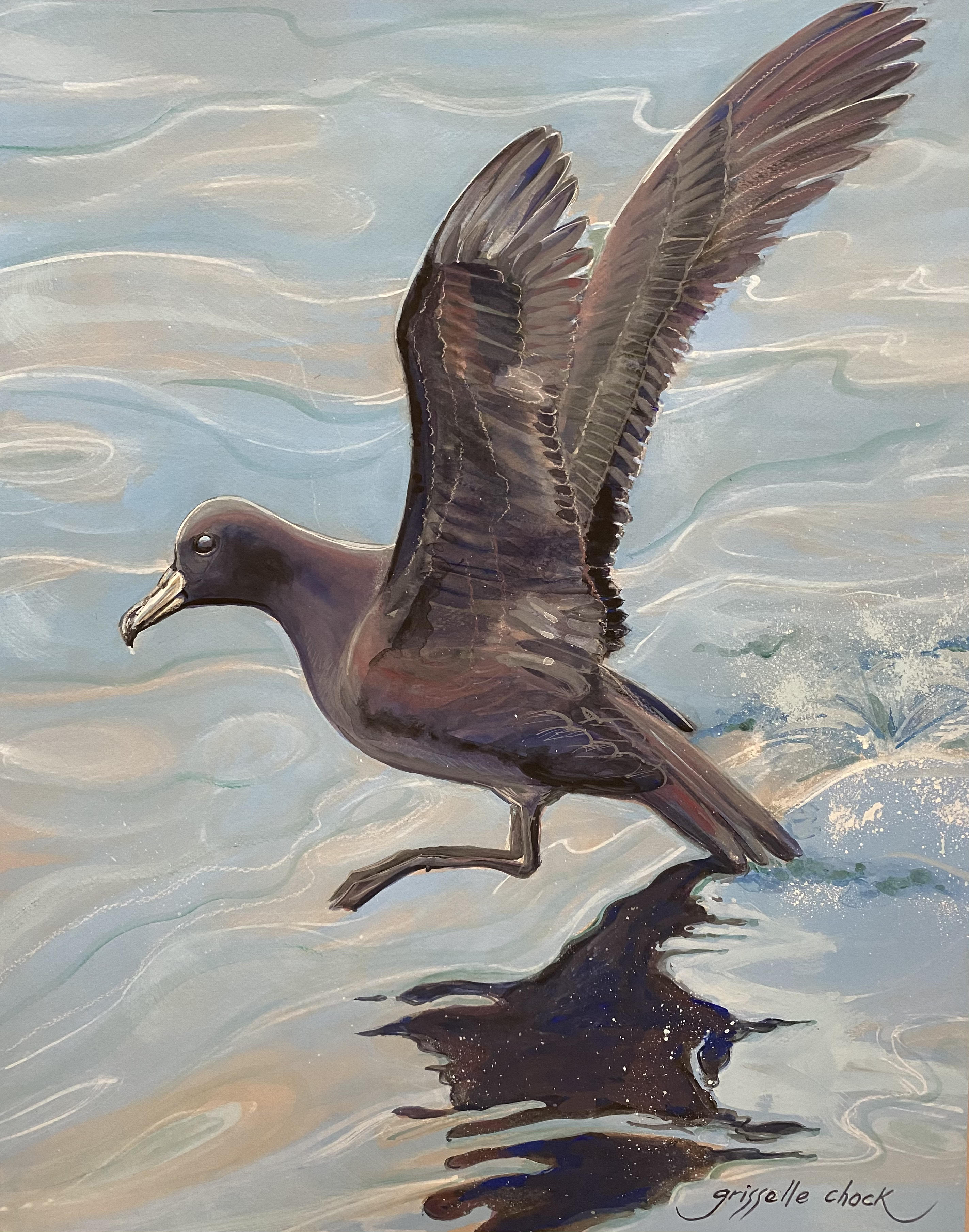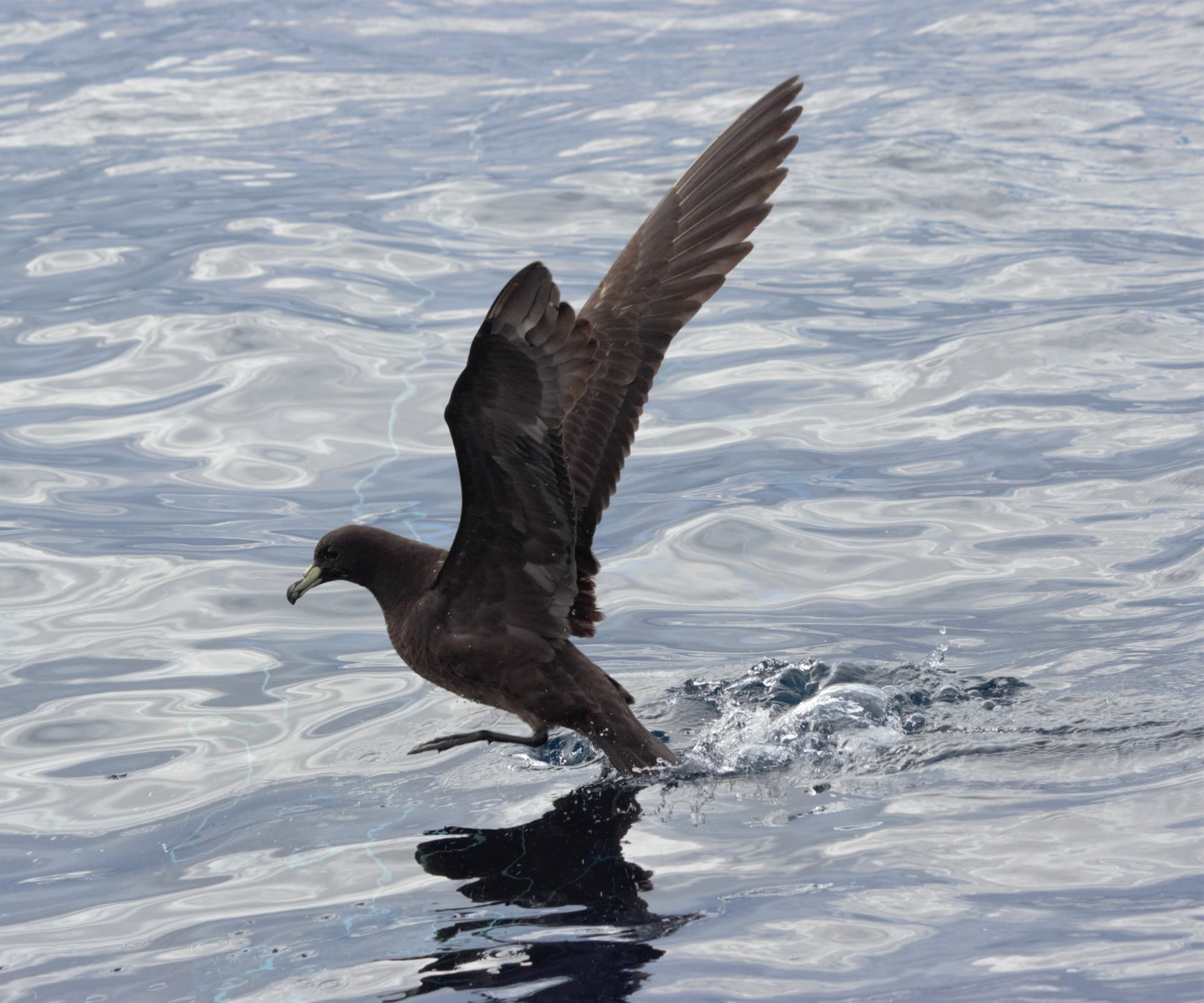
Black Petrel in water colour gouache by Grisselle Chock, from the followimg photograph by Virginia Nicol

Black Petrel at sea, photograph by Virginia Nicol
Elizabeth ‘Biz’ Bell (Wildlife Management International Limited, Blenheim, New Zealand) published in 2016 in the journal Notornis on diving behaviour of the ACAP-listed and globally Endangered Black Petrel Procellaria parkinsoni.
The paper’s abstract follows:
“The black petrel (Procellaria parkinsoni) is recognised as the seabird species at greatest risk from commercial fishing activity within New Zealand fisheries waters. Despite the fact that valuable mitigation information could be obtained from such data, little is known about the diving ability of this species. Diving data were obtained from electronic time–depth recorders from 22 black petrels breeding on Great Barrier Island (Aotea), Hauraki Gulf, New Zealand, during the early chick rearing period from January-February in both 2013 and 2014. This paper presents the first information on the diving ability of black petrels. The deepest dive recorded was 34.3 m, but maximum dive depths varied considerably among individuals (range 0.8-34.3 m). The majority (86.8%) of all dives were < 5 m and black petrels rarely dived to depths of >10 m. The majority (92.7%) of dives were during the day and time of day had no major effect on dive depth. Only males dived at night, between 2300 and 0200 hours. This information could be used to improve mitigation measures for black petrel and other seabird bycatch in longline fisheries particularly in relation to recommended depths for unprotected hooks and line sink rates. To achieve the recommended minimum 10 m depth for unprotected hooks it has been shown that hooks have to be deployed at 6 knots with a 0.3 m/second line sink rate when using 100 m streamer lines. Adoption of these measures should further reduce black petrel bycatch in longline fisheries.
With thanks to Biz Bell, Grisselle Chock and Virginia Nicol. Note that ACAP Latest News missed featuring this paper when it was published. It is posted now because of its importance for conserving the now nationally and globally Endangered species.
Reference:
Bell, E.A. 2016. Diving behaviour of black petrels (Procellaria parkinsoni) in New Zealand waters and its relevance to fisheries interaction. Notornis 63: 57-65.
John Cooper, ACAP Information Officer, 05 February 2021

 English
English  Français
Français  Español
Español